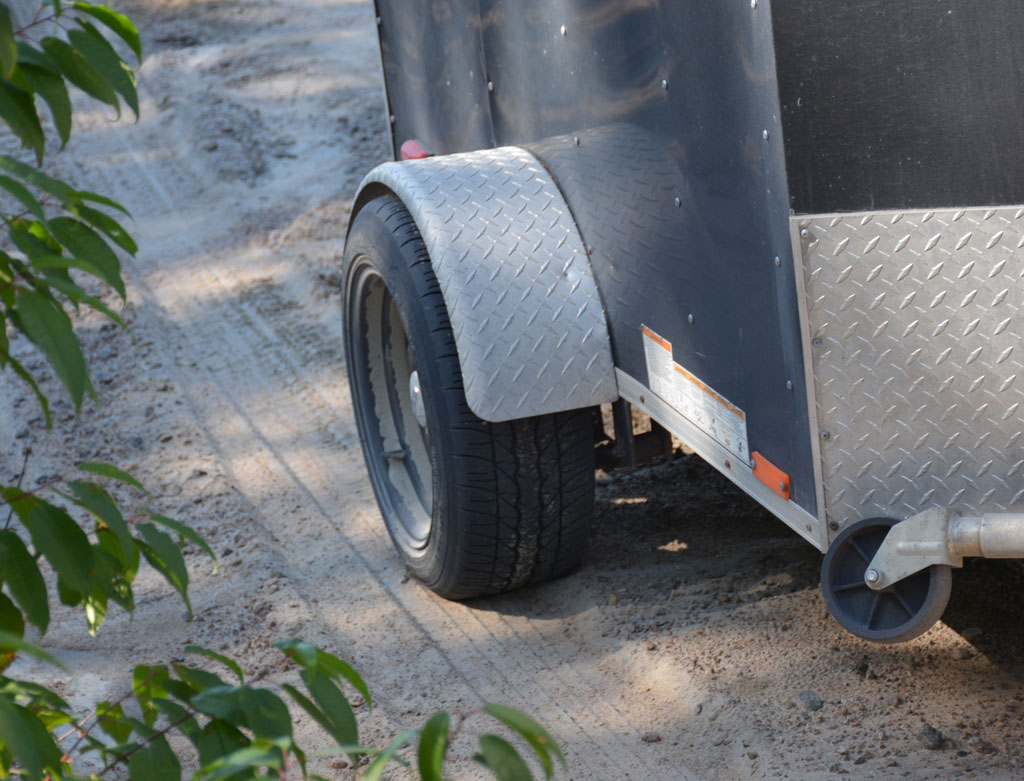Trailer Tech: Car and Truck Tires on Your Trailer
Welcome back to Trailer Tech! Automotive/Trailer Blog
We here at Trailer Blocks thought it’s the perfect time to talk tires. Many folks assume that the trailer tire or “ST (special trailer)” tire is the only option. This simply isn't true.
A unique characteristic differentiating the trailing vehicle from the driven vehicle is trailer sway. One of the primary causes of trailer sway is flexing in the sidewall of the tire. For this reason it is critical to choose a tire that carries a sufficient load index for the trailer. For example if your trailer’s GVWR is 6000lbs and is tandem axle, the tires should be rated for 6000lb / 4 tires = 1500lbs per tire.
Referencing a tire load index table, such as the one found here: http://en.wikipedia.org/wiki/Tire_code#Load_index tells us that an ST (special trailer) or LT (light truck) tire would need to carry a load index code of 95. If we were putting P (passenger car) tires on the trailer we would have to apply a 9% reduction resulting in a load index of 99. This is because ST and LT tires carry a ply rating, while P tires do not.

By correctly matching a tire’s load index to the trailer’s requirements, P and LT tires can be used on your trailer. This opens up a lot of options.
In vehicles, we select a tire that is appropriate for driving conditions, the trailer is no different. Off road driving demands an off-road tire with multiple plies and a high load index. An aggressive tread pattern is useful to prevent sliding on uneven terrain. On-road street driving demands a high speed rating with a well-designed tread pattern for good wet/dry performance and cornering. Tires with V-shaped groves help relocate any potential road water from the center of the contact patch to the outside, preventing hydroplane condition. Winter driving conditions warrant winter rated tires that remain soft and sticky on ice where trailer brake performance can be devastating.
Overall, maximizing the speed rating for the load index required yields the best results. A high speed rated tire has a superior tread pattern and a correct load index greatly reduces trailer sway. In any case, tire balancing is important and on-vehicle balancing can remove a lot of secondary ride issues (such as vibration).
We hope you've enjoyed this entry of Trailer Tech and our insights on car and truck tires. If you have suggestions for future topics, feel free to comment and let us know.
Thanks for reading! We truly hope to offer some informative articles in an underdeveloped topic-area of Steemit
Have you ever been driving down the highway and thought the noise you hear is unbearable? It's not just that it bothers you: more noise means more distractions, and that means it's worse for safety. What's more, all that loud roaring makes long-distance driving much less comfortable, especially after you try to solve the problem with loud music. So I suggest you check out Quietest Tires for Toyota Camry [Best Options & Detailed Guide] to choose the right tires for you.